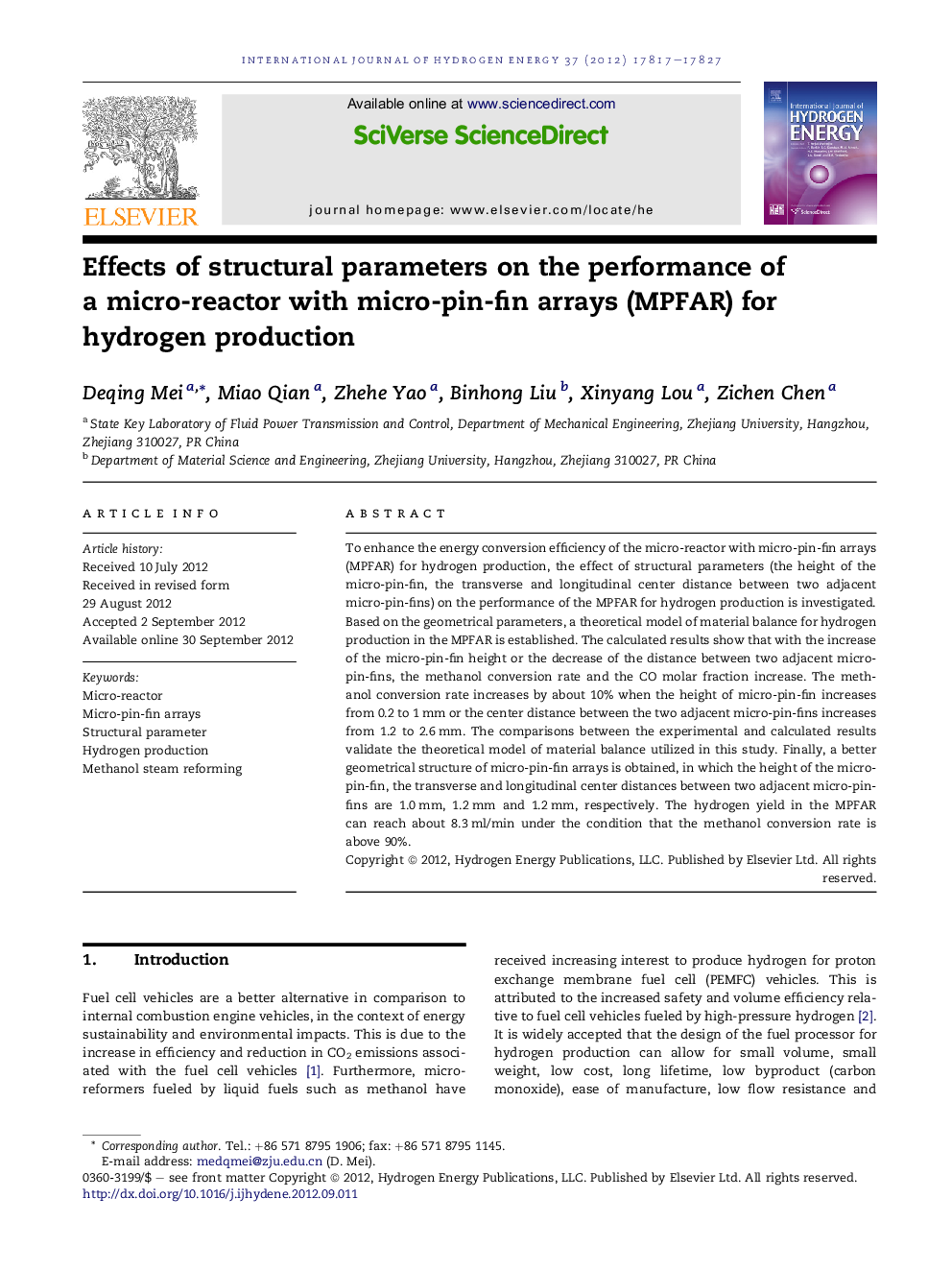| Article ID | Journal | Published Year | Pages | File Type |
|---|---|---|---|---|
| 1278300 | International Journal of Hydrogen Energy | 2012 | 11 Pages |
To enhance the energy conversion efficiency of the micro-reactor with micro-pin-fin arrays (MPFAR) for hydrogen production, the effect of structural parameters (the height of the micro-pin-fin, the transverse and longitudinal center distance between two adjacent micro-pin-fins) on the performance of the MPFAR for hydrogen production is investigated. Based on the geometrical parameters, a theoretical model of material balance for hydrogen production in the MPFAR is established. The calculated results show that with the increase of the micro-pin-fin height or the decrease of the distance between two adjacent micro-pin-fins, the methanol conversion rate and the CO molar fraction increase. The methanol conversion rate increases by about 10% when the height of micro-pin-fin increases from 0.2 to 1 mm or the center distance between the two adjacent micro-pin-fins increases from 1.2 to 2.6 mm. The comparisons between the experimental and calculated results validate the theoretical model of material balance utilized in this study. Finally, a better geometrical structure of micro-pin-fin arrays is obtained, in which the height of the micro-pin-fin, the transverse and longitudinal center distances between two adjacent micro-pin-fins are 1.0 mm, 1.2 mm and 1.2 mm, respectively. The hydrogen yield in the MPFAR can reach about 8.3 ml/min under the condition that the methanol conversion rate is above 90%.
► A theoretical model of material balance for the MPFAR is developed. ► Structural effects on the MPFAR performances are crucial. ► Obtaining a better structure of micro-pin-fin arrays for hydrogen production.
